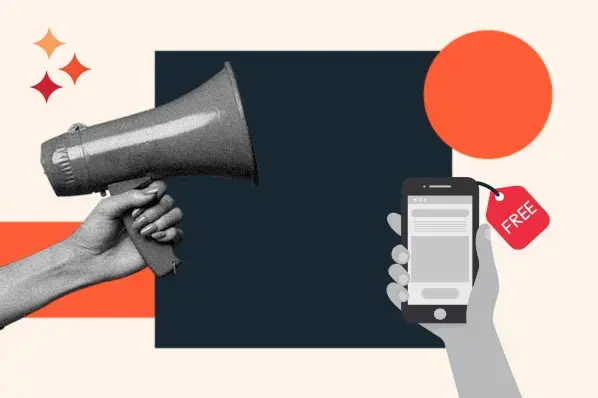How Ouija Boards work
How Ouija Boards work I know there are many gullible people in this world. I think I first realized this when I heard of a phenomenon called the Pet The post How Ouija Boards work appeared first on 3 Chips on God.

I know there are many gullible people in this world. I think I first realized this when I heard of a phenomenon called the Pet Rock. My fellow dinosaurs who live in the US will know what I’m referring to, but for the young’uns out there, people not living in the US, or those who’ve been hiding under a rock that was not a pet (pun intended), let me explain to you what the Pet Rock was.
The Pet Rock craze was one of the most insane I have ever witnessed. Not just because of the number of people who were buying them up, but because the Pet Rock had to be dumbest of the dumb ideas that became popular. The object of desire was not some cute, cuddly toy that children like to play with, like Beanie Babies or the Elmo Doll. No. This was basically a rock – manufactured in a factory, yes – but not very different from the real thing that you could find anywhere on the side of a road. It was bought by as many adults as children. It consisted of a fake rock that was accompanied by a 32 page instruction manual on how to raise, pamper, and teach tricks to your new Pet Rock. It was accompanied by a cardboard box “cage” with holes in it for the rock to breathe, as well as a nice straw bed for the rock to lie on. Over a million of these were sold for $4 or more, and the founder became a newly minted millionaire.


So with that in mind, perhaps the popularity of another strange product – the Ouija board – is not so hard to comprehend. As we just discussed, there have been other kooky trends that have come and gone, right? WRONG. The Ouija board is not like the rest of them – it hasn’t come and gone. It’s come and stayed. 130 years after it was first created and marketed, it still remains a popular board game that is sold even today.
Assuming that the Ouija board is a bunch of hooey, and doesn’t truly summon spirits to communicate with us from the great beyond, how has it remained in such demand?
To understand it better, lets go back to when it was first created and sold. The year was 1890 when an attorney named Bond – Elijah Bond – along with a few others, conceived of the idea and filed for a patent. (High-five if you got my Bond joke.) Of course, the idea of wanting to talk to ghosts was nothing new, and there had even been some history of using a planchette (the small, triangle plank thingy that moves around on the board) to try reaching out to spirits in China around 1100 AD. However 1890 was when the Ouija board was first officially created and sold. It supposedly named itself, i.e. the founders asked the board what its name should be, and it spelled out Ouija. But legend has it that Bond’s sister-in-law, Helen Peters, was wearing a locket with a picture of a woman, and it said Ouida above the picture. Ouida was a popular women’s rights activist at the time. So the sneaky Helen Peters may have been the one to have misspelled the name on the board – unless you’re one of the loons who believes a spirit really did it.

It was said that Bond and his fellow investors decided to create the formal board game when a local newspaper started reporting on spiritualist camps in Ohio who claimed to be communicating with departed souls through a homemade version of the board and planchette. Life spans were short back then with men dying in wars, women dying in childbirth, and children dying from disease. So being able to connect with deceased loved ones had become a source of comfort during the 1800s and began growing in popularity.
Mary Todd Lincoln was supposed to be a frequent conductor of seances in the White House around 1860 – at least one of which it is said President Lincoln also attended – where she believed she was able to speak to her dead son William, who perished from typhoid fever.
Taking advantage of what they noticed was a growing trend, Bond and his cofounders filed and were granted patent number 446,054 for their new toy. Interestingly, the patent application never explained HOW the board worked. It just assumed that it did.
That was good enough for the naive masses. While there is no way to know the total number of games that have sold in its 130 years of history, during the first few years of its debut, the board was in such demand that a three story factory was built to cope with the backlog. The founder of the factory – William Fuld – fell off its roof and died – but the product continued to be sold, passing from one owner to the next. Hasbro owns the rights to the name and game today. In his book, Occult America, author John Goodwin estimated that between 1967 and 1972 approximately 10 million of these boards were sold. That’s about 2 million per year in just a five year span.
Though that number may have decreased, it’s safe to assume that the sales are still going strong overall. When I looked today on Amazon, I could see numerous versions of the board for sale – including a premium wood, handmade, and Friday the 13th set. A special edition game also comes with an incense and ghost protection kit, to help stay safe from any demons that might be summoned while playing.

I’m not even going to list out all the OTHER Ouija products you can buy as jewelry, t-shirts, laptop covers, and more. Apparently it’s also very popular as home decor.


The classic Ouija board Amazon listing currently has more than 6500 reviews, with many serious ones claiming that their purchased boards have worked as advertised:
“I was a skeptic to be honest. But with just a little practice my daughter and I were able to speak with dead relatives in no time. Knowing that those who have passed are still around and we have a way to contact them has been amazing. “
Or the following “ . . . I don’t believe in all that spirit or ghost talk type of junk. But I can honestly say so many crazy things was happening in my house after we open it up, we didn’t even play with it!! THINGS DISAPPEARED AND REAPPEARED more than once . . . ”
Or “ . . . it woke something up in my sisters house. My sister and I played this at her house, but we didn’t make contact. A few weeks later my nephew who is three years old started seeing a little boy who nobody else could see.”
In addition, there are records of famous people who have sworn to have used the board to ask for advice and even creative help from the otherworld. Sylvia Plath, author of the acclaimed The Bell Jar, was known for consulting her homemade Ouija board for various reasons, and she wrote the poems Ouija and Dialogue over a Ouija Board to capture her experiences. Actress Andie MacDowell has claimed to have connected to her dead Uncle through the board. The cofounder of AA (Alcoholics Anonymous) Bill Wilson wrote in his autobiography that he used the Ouija board to create the program’s beloved 12 steps. Pulitzer Prize winner James Merrill said he used the board extensively for 40 years to help him write.
What’s going on here? Are they for real, or are they superstitious people who were already prone to believing such concepts, and moved the triangle planchette thingy themselves either consciously or subconsciously?
According to the scientific community, the moving of the planchette may be real, but its due to a subconscious phenomenon known as the ideomotor effect (idea + motor / movement). In other words, a thought or mental image can bring about a corresponding reflexive or automatic muscular action, not often discernible to the naked eye, and unbeknownst to the person doing it. The same applies to dowsing, where a rod moves in a particular direction, based on the subconscious minuscule movements of the person holding the rod.

Significant research has been done using planchettes, dowsing rods, pendulums, and other instruments that can be greatly influenced by small movements. The most simple experiment was – unsurprisingly – the Blindfold Test – where participants who claimed to have not moved the planchette during a Ouija session, then had their eyes covered and were asked to repeat the same feat of trying to communicate with spirits through the board. Obviously, they couldn’t – either the planchette didn’t move, or it spelled out words that made no sense.

So the Blindfold Test showed that most likely humans – not spirits – were the ones answering the questions. SHOCKING!! (Sorry, I know I’m dripping with sarcasm here.)
During a second, more complex experiment, participants were asked to answer two sets of questions – both normally, and through a device such as a dowsing rod, which was supposed to point to the correct answer. (If you’ve ever held a dowsing rod or rods, you’ll note that they are extremely lightweight and easy to move – in fact, I find them TOO quick to move, i.e. just a small twitch makes them swing around without much control.)
The answers to the two sets of questions had to be labelled as guessing or accurate, i.e. the participant was not sure of the answer vs. he was confident he was right. In cases where the answer was marked as a guess, the dowsing rod sessions resulted in more questions being answered correctly than when the person was simply writing the answer down. Scientists found that the dowsing rod helped bring out subconscious thoughts or knowledge that may not have been expressed otherwise. Because the participant was not fully aware that he already knew certain kinds of information, he was open to believing that a supernatural force had come up with the answer instead.
Through this and other experiments, scientists concluded that people can genuinely be unaware of their own slight actions or subconscious thoughts when it comes to influencing dowsing rods, pendulums, Ouija boards, and other such devices.
I do think the ideomotor effect makes sense to some degree. But I don’t see how it applies as much when it comes to the Ouija board, because spelling out words requires bigger movements as compared to a simple tilt of a dowsing rod or pendulum. Even the Yes and No parts of the board are quite a distance apart, it would take some effort to move the planchette to one end or the other. I think people either know that they are making fools of themselves and others as they move the planchette, or it’s possible that they believe the spirits are indirectly guiding them as to how to answer their own questions. Just like some people are more able to be hypnotized than others, I could see where a person sincerely thinks they are being told what to do by a divine force, even if they are aware that they are moving the planchette themselves. How many of us feel that we are being guided by fate or karma or the universe in our day to day to lives? For some, that feeling may extend to their movements on a Ouija board.
Whichever explanation it is, the whole thing may seem harmless at first, but there have been murders and other horrific crimes where the perpetrator attributed the instructions to kill to their Ouija boards. Whether they were using it as an excuse, or truly believed their own stories, is hard to say. Luckily, the crimes associated with Ouija boards have been few overall, roughly one to every few million that have been sold.
Finally, it seems many people buy the game out of simple curiosity and fun. They know it most likely won’t work, but they are open to trying anyway. There is plenty of healthy skepticism and humor around its effectiveness in a number of other Amazon reviews:
“I didn’t think it would work, and I was right. I now use it as a chopping board for vegetables.”
“Spirits only contact me in Spanish, is there a translation button somewhere?”
“I was lonely during quarantine and wanted to make some spirit friends. Still lonely.”
“We did not reach our dead dog (that) we tried to summon, but maybe that’s because she can’t spell.”
“Mostly works . . . but when I ask it who my first girlfriend would be, it keeps spelling H-A-H-A-H-A over and over again . . . .”
“Tried to get in contact with Satan right away, and tell him to take Hillary Clinton once and for all. Still no luck.”
So to summarize, we’ve got people who buy the game because they truly believe in ghosts and spirits, and they genuinely hope to communicate with them through the board. And then we’ve got those who know the board most likely doesn’t work, but buy it as a fun party activity anyway.
And then there is one last category – people like me – who don’t buy or play it – at all. By now I think you can guess where I lean – my needle points towards Does NOT Work more than Does Work. It’s not that I’m completely dubious. The theist part of me does think there may be something to the copious ghost / haunted house / supernatural stories we’ve heard over the centuries. It would seem there wouldn’t be this much smoke without some kind of fire. Maybe. Or maybe not.
But even if there is such a thing as a departed soul floating around heaven, waiting to be contacted, I’m not so sure I buy the part about them only getting in touch once a Ouija board is in the house. If spirits wanted to be in touch with us so badly, they’d find a way with or without a board. If they’re not around, maybe they’re just not that into us. I don’t see what magical powers a cardboard game has.
OTHER POSTS YOU MIGHT LIKE
Now all that bravely said, I’m going to be sheepishly honest here – despite all the logic I’ve just spewed, I don’t trust the Ouija board to be anywhere near me. I’m serious – I find it spooky! I have played with Ouija boards as a teen, they used to be a favorite fixture at parties back in the 80s. Never liked them, even when I guessed the movements were coming from my friends.
Therefore I have no desire to experiment with one again now, even if that would have been the responsible thing to do as part of my research for this article. I don’t care, I’m not going to tempt fate.
I’m such a wimpy chicken, I don’t even like having Ouija board pictures open on my computer while I am doing research for this article. I’m not making this up! True story – as I write this, I have been closing out each webpage as soon as I am finished with it, especially as my night owl self is writing this around 3 AM which everyone knows is the witching hour.
If I’m creeped out by virtual images, I can’t even imagine having the actual board here. It can stay in the toy store with the Chucky Doll. As one Amazon reviewer – who returned it the moment he received it as a gift – put it: “Hell NO! Not even going to try it for a second.”
I concur.
It’s fake.
The Ouija Board is just a wishful-thinking gimmick.
But HELL NO!
The post How Ouija Boards work appeared first on 3 Chips on God.
Tags:
What's Your Reaction?








![How to Understand & Calculate Statistical Significance [+ Example]](https://www.hubspot.com/hubfs/how-to-calculate-statistical-significance-1-20250106-7754856.webp)






























.png)












































